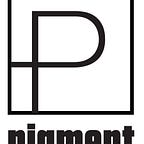How the roots of Black art are connecting across continents in an examination of the Black experience
Art serves as the common cultural thread linking Black humanity. Just as the root system of forests link different species of trees together in an underground network — think the Tree of Souls in Avatar — the Black art experience emanates and grows from different but shared perspectives.
The search for these artistic commonalities led art curators from the United States and Africa to join forces to tell a story of cross cultural Blackness in the visual arts. Titled The Shape of Blackness, the exhibition highlights expressions of contemporary Blackness as envisioned by 11 South African and U.S. artists. The exhibit may be viewed live in Oakland or virtually.
Created by Cedric Brown of the Atlantic Fellows for Racial Equity, a transnational network of leaders who challenge anti-Black racism, the SHAPE exhibition engages artists in a globe-spanning conversation focused on the Black experience past present, and future. SHAPE is inspired by the Rorschach inkblot test which the organizers say conveys both symmetry and individual interpretation of an entire picture. Those interacting with the exhibition may engage to answer the question “when you look at contemporary Blackness, what do you see?”
Featured artists are Theko Boshomane, Tshepiso Moropa, Lebohang Motaung, Lebo Thoka, and Helena Uambembe from South Africa. Aaron Beitia, Courageous, Nicole Dixon, Michon Sanders, Brette Sims, and Abba Yahudah represent the United States. Their works span mediums including photographic prints, acrylic works on canvas, oil, spray paint and acrylic mixed media, collage/ digital collage, charcoal, enamel on wood, and cotton thread on duchess satin.
Odysseus Shirindza, director of Gallery MOMO in Johannesburg, is serving as an independent curator for SHAPE. “I’m extremely fortunate to be a part of this artistic experience,” he says. “SHAPE provides an opportunity to use visual art to delve into a nuanced conversation to change negative perceptions that are often ingrained in our communities, whether on the continent or in the Diaspora.”
California-based art curator, Trevor Parham, has partnered with Shirindza to share these stories of joy, pain, triumph, and struggle. He is the founder and director of Oakstop, an art gallery and event space in Oakland. As co-producer and co-creator of The Shape of Blackness, Parham said, “There is a long history of supporting Black artists with the belief that Black art, as well as the economic interests of artists, need to be represented. They have something to say as Black artists on the social and political level.”
“Through this exhibit, what we are trying to share is that there is an opportunity for the whole world to understand the various facets of the Black experience globally,” Parham continues. “There’s an overlap of perspectives of what it means to be Black in the world, but also, there are very different experiences as well.”
Parham explained that art in Oakland is heavily inspired by history. The influence of the Black Panther Party, during their heyday in 70s and ’80s, has had a lasting impact on Black art and creative expression there. ‘He said that the Black Panthers used art to depict the struggle that Black people were experiencing. Their canvases — murals, plywood signs and sidewalks — challenged the enforced silence among Black folks, as well as the discrimination by the mainstream art world. Oakland is a city where art tells the story, and South Africa represents the roots where many of those stories began.
In the aftermath of the painful murder of George Floyd, and the racial uprisings impacted by that murder, there is an outcry from Black people to stop devaluing their lives. This last year has been one of reckoning in the states, but South Africa has its own stories of fallen leaders and woes brought on by the pandemic. Both Shirindza and Parham agree that society is reassessing the grievances of Black folks across the globe in a new light. The exhibit they’ve created offers viewers a chance to reexamine what the Black experience has been, and where it goes from here.
“We need to make sure we use art as a medium to engage in that dialogue,” Parham concludes. “Where are the common roots?” he asked. “How have those roots manifested themselves over generations around the world and throughout the Diaspora?”
The Shape of Blackness shows that the ecosystem connecting Black artists and their work, runs deep and remains strong.
To view The Shape of Blackness exhibit, visit www.shapeofblackness.com. The exhibit is powered by the virtual gallery platform, Exhibbit, offering a 3D art gallery environment that allows viewers across the globe to view artwork, read artists’ statements and learn more about the art or artists through the website.
Contributor Vee L. Harrison
